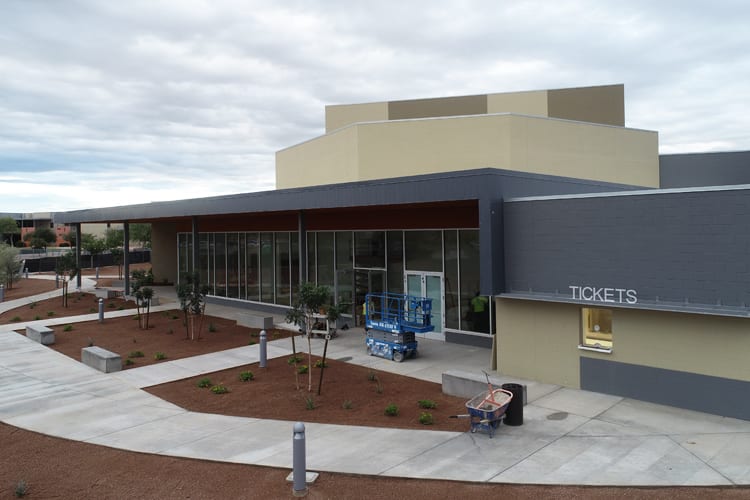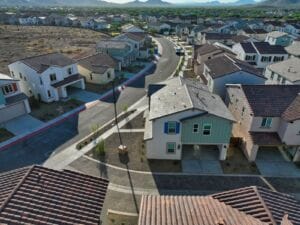Nothing will ever take Arizona back to the great school construction boom of the early 2000s. From 1999 to 2007, the Arizona Schools Facilities Board, the organization that distributes funds for school districts to build new schools or make improvements to existing facilities, provided funding for 219 new schools. Then, as those in the commercial real estate world remember, the economy faltered and very little new building occurred. In fact, from 2008 to 2016, the ASFB provided funds for just three new schools.
Part of the problem is that the funding formula that the ASFB uses to determine how much money a new project will receive remained the same, while the cost of construction went up, leaving districts with a funding gap that they would have to fill through ballot measures. Up until the 2016 election, the vast majority of district bond measures that were on ballots across the state did not pass, meaning no new schools would be built.
“If a district qualifies, the Arizona School Facilities Board can provide some funding for new educational spaces,” said Barry Chasse, owner of Chasse Building Team, a company that is active in education construction. “However, their current funding formula is completely inadequate to build a new school…let alone a state-of-the-art school.”
The view towards school districts asking for more funds through the bond process changed sometime after 2015, as more and more districts dealt with higher student enrollments and no increases in funding from the state. In the 2016 election cycle, 43 out of 54 ballot measures that were put forth by districts seeking funding for facilities improvements or new schools passed. That was followed by a perfect 22-for-22 record in 2017 for districts seeking budget overrides or bond measures.
“Bond money is vital and completely necessary to build schools benefiting Arizona students,” added Chasse. “Districts are competing with private and charter schools for students. They have no choice but to ask their local communities to support bonds to allow the construction of new education facilities.”
The new way that districts like the Agua Fria Union High School District are building first-class educational facilities is to combine ASFB funding and bond funding. The result is a facility like the new Canyon View High School in Waddell, which opened in August.
Canyon View features high-tech form and function, along with first-of-its kind features like the Teaching and Learning Accelerator, which is simply gathering and collaboration spaces that are flexible and can be used for a variety of educational purposes. Canyon View cost just under $76 million to build, with $33 million coming from ASFB funding and the rest from bonds.
“Bond support is essential for construction or renovation of any school, not just ones with cutting-edge design features,” said Carmen Wyckoff, AIA, LEED AP, an architect with DLR Group, who designed Canyon View. “For state-funded new construction over the past few years, the state’s contribution only covered about 50 percent of the average cost to build. Bond support is also needed for technology in the classroom, like laptops, wireless access points, and displays and the curb appeal of modern, high-tech buildings also help both K-12 and higher ed schools compete for students.”
The Tolleson Unified School District has also combined bond funds with ASFB money to begin construction on West Point High School. The ASFB share of the funding for West Point is $47 million, while $53 million will come from bonds and an additional $7 million from adjacent ways.
Chasse is the general contractor for West Point, with ADM Group as the architect. The school broke ground in October and is expected to be ready for students by July of 2019 and is being built to accommodate 3,000 students when it is all completed.
The Queen Creek School District has been growing at a rapid rate and was in dire need of new schools at all levels. The district’s bond measures failed in 2016 but they had better luck in 2017, getting $63 million in funding for a new elementary school and a new high school, both of which are currently under construction. Chasse and DLR are teaming up on the elementary school, while Orcutt | Winslow designed Eastmark High School, which is being built by Core Construction.
Another use for bond funds are adding vital buildings to existing schools, like the Combs High School Performing Arts Center in San Tan Valley. The J.O. Combs district voters passed a bond measure in 2016 that provided funding for new facilities and improvements at Combs High School. The PAC, designed by DLR Group and built by McCarthy Building Companies, is set to open in January.
“We had a broad group who we listed to when building the PAC, and found opportunities for the space to incorporate both new technology and traditional form and function, so that the students ultimately get the greatest benefit from the space,” said Andrea Ramos, project director for McCarthy. “We truly wanted the Combs PAC to be a gem for the San Tan community.”




